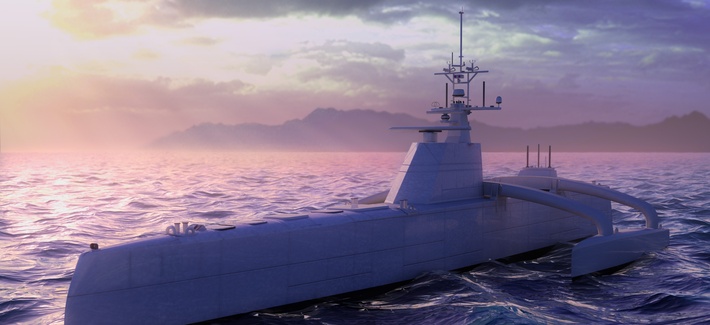Next time you’re at the beach lounging on a cheap slab of terry cloth or enjoying an ice cold beverage in the comfort of an oversized chair dug into the sand, glance across the wide expanse of the ocean and know that somewhere out there on the horizon a robotic ghost ship is keeping you safe.
Well, not yet. But soon. Very soon an automated phantom vessel will ensure America’s security by keeping tabs on threats like stealthy Russian and Chinese submarines, for example.
Because recently the Defense Advanced Research Projects Agency (DARPA) announced that the Anti-submarine Warfare Continuous Trail Unmanned Vessel, or ACTUV — first commissioned by the agency back in 2010 — passed a critical test. One that could change the way man “travels the world and seven seas” forever.
More on the breakthrough from Defense One:
In six weeks of tests along a 35-nautical mile stretch of water off of Mississippi, testers at engineering company Leidos andDARPA put the ACTUV’s systems through 100 different scenarios. The test boat, equipped with nothing more than off-the-shelf radar components, a digital area chart and some proprietary software, was able to complete an autonomous trip without crashing into rocks, shoals, or erratically behaving surface vessels. In future tests, the ship will tail a target boat at 1 kilometer’s distance.
Most importantly, the tests showed that the robot boat could execute a difficult military mission without violating the maritime laws outlined in the Convention on the International Regulations for Preventing Collisions at Sea. They also provided a critical proof-of-concept for machine-learning systems at sea, showing that big robots can, indeed, navigate the open seas along with cruise ships and shrimp boats. The next big challenge for the ACTUV will be the same kind of tests, but with “enemy ships” trying to block or interfere with it.
The world’s waters could soon be crowded with robot ships that almost never hit land.
At a recent event in Virginia, DARPA official Ellison Urban explained why this revolutionary boat will prove so critical in the future. Diesel-powered enemy submarines, he said, are not only hard to track with current techniques, they’re also cheap relative to a nation’s budget ($200 to $300 million). Iran, for example, claims to already have 17 of them.




































